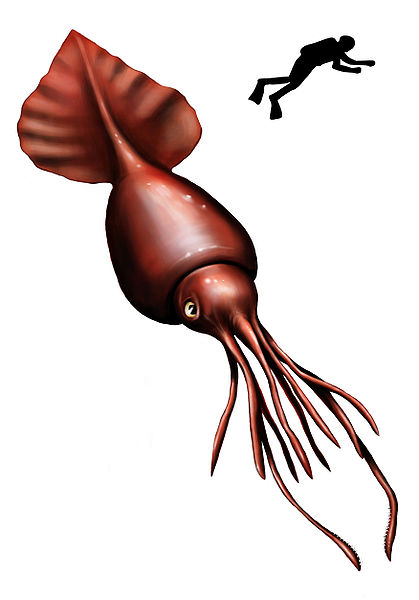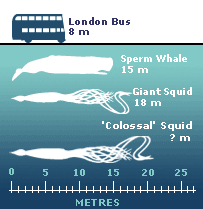It looks like you're using an Ad Blocker.
Please white-list or disable AboveTopSecret.com in your ad-blocking tool.
Thank you.
Some features of ATS will be disabled while you continue to use an ad-blocker.
6
share:

Behold Pando, the quaking giant who trembles golden and white over 107 acres of the Fishlake National Forest in Utah. Pando has lived for some 80, 000 years, and every one of the thousands of Aspen trees in this vast unigrove is genetically identical, and shares one vast root system.
Pando has not flowered in 10,000 years, simply sprouting new grafts from its impossibly resilient matrix of roots.
A haiku for Pando:
Make me a membrane
Stretched over quaking acres
A mate for Pando
en.wikipedia.org...(tree)
atlasobscura.com...
edit on 29-3-2012 by Eidolon23 because: link add.
Don't worry...
In 20 years we'll turn that waste of space into a parking lot and get some real use out of the land.
Maybe a mini-mall... or some suburbs...
Either way, can't you see how much room those trees are taking up?
In 20 years we'll turn that waste of space into a parking lot and get some real use out of the land.
Maybe a mini-mall... or some suburbs...
Either way, can't you see how much room those trees are taking up?
reply to post by YouAreLiedTo
Yeah, and then the mini-malls will get taken over by this thing:

That, my friend, is the second largest organism in the world. It is a giant, tree eating fungal mat, and it is coming to a parking lot near you.
Yeah, and then the mini-malls will get taken over by this thing:

That, my friend, is the second largest organism in the world. It is a giant, tree eating fungal mat, and it is coming to a parking lot near you.
Until August of 2000 it was thought that the largest living organism was a fungus of the same species (Armillaria ostoyae) that covered 1,500 acres (600 hectares) found living in the state of Washington. But then mycology experts surmised that if an Armillaria that large could be found in Washington, then perhaps one just as large could be responsible for the trees dying in the Malheur National Forest in the Blue Mountains of eastern Oregon. Researchers were astonished at the sheer magnitude of the find. This most recent find was estimated to cover over 2,200 acres (890 hectares) and be at least 2,400 years old, possibly older.
www.extremescience.com...
reply to post by Buddha1098
Pound for pound, Pando's bigger, but Mighty Mycellium does cover more acreage.
Pound for pound, Pando's bigger, but Mighty Mycellium does cover more acreage.
reply to post by Eidolon23
I wonder how much all the ants in this colony would weigh? Not a single organism I know but impressive none the less.
news.bbc.co.uk...
I wonder how much all the ants in this colony would weigh? Not a single organism I know but impressive none the less.
news.bbc.co.uk...
edit on 29-3-2012 by Buddha1098 because: (no reason given)
For some reason I misread the title and I seen "World's Largest Orgasm"
Didn't know what I would see in the OP but then it was a moment.
Anyways, still interesting...lol
Peace
edit on 29-3-2012 by jude11 because: (no reason given)
reply to post by Buddha1098
Holy crap!
That's amazing!
What next?

Zounds!
Holy crap!
While ants are usually highly territorial, those living within each super-colony are tolerant of one another, even if they live tens or hundreds of kilometres apart. Each super-colony, however, was thought to be quite distinct.
But it now appears that billions of Argentine ants around the world all actually belong to one single global mega-colony.
Researchers in Japan and Spain led by Eiriki Sunamura of the University of Tokyo found that Argentine ants living in Europe, Japan and California shared a strikingly similar chemical profile of hydrocarbons on their cuticles.
That's amazing!
What next?

Zounds!
The Great Barrier Reef is one of the seven wonders of the natural world, and pulling away from it, and viewing it from a greater distance, you can understand why. It is larger than the Great Wall of China and the only living thing on earth visible from space.
www.greatbarrierreef.org...
How about...
The Kraken!

The Kraken has been a favorite from childhood.
The Kraken!

The colossal squid (Mesonychoteuthis hamiltoni, from Greek mesos (middle), nychus (claw), and teuthis (squid)), sometimes called the Antarctic or giant cranch squid, is believed to be the largest squid species in terms of mass. It is the only known member of the genus Mesonychoteuthis. Though it is known from only a few specimens, current estimates put its maximum size at 12–14 metres (39–46 ft) long, based on analysis of smaller and immature specimens, making it the largest known invertebrate.
Unlike the giant squid, whose arms and tentacles only have suckers lined with small teeth, the colossal squid's limbs are also equipped with sharp hooks: some swivelling, others three-pointed. Its body is wider and stouter, and therefore heavier, than that of the giant squid. Colossal squid are believed to have longer mantles than giant squid, although their tentacles are shorter.
The squid exhibits abyssal gigantism. The beak of Mesonychoteuthis hamiltoni is the largest known of any squid, exceeding that of Architeuthis (giant squid) in size and in robustness. The colossal squid also has the largest eyes documented in the animal kingdom; a partly collapsed specimen measured 27 centimetres (11 in).
en.wikipedia.org...
The Kraken has been a favorite from childhood.
Originally posted by Planet teleX
The Great Barrier Reef is one of the seven wonders of the natural world, and pulling away from it, and viewing it from a greater distance, you can understand why. It is larger than the Great Wall of China and the only living thing on earth visible from space.
www.greatbarrierreef.org...
Well, sort of.
The Great Barrier Reef is the world's largest structure composed of living entities, stretching 2,000 km, but contains many organisms of many species.
en.wikipedia.org...
It's the biggest symbiote in the world.
reply to post by Xoanon
Huzzah for the Kraken!
My childhood favorite, as well.
Deep sea gigantism at its finest- I give you the Japanese Spider Crab.
I love how he grapples and hefts it like it's maybe a weed-whacker.

But this guy knows how to handle a ginormous crab, and he looks positively stoked about holding one. I do not blame him.


How truly grand these critters must be in person.
Huzzah for the Kraken!
My childhood favorite, as well.
Deep sea gigantism at its finest- I give you the Japanese Spider Crab.
I love how he grapples and hefts it like it's maybe a weed-whacker.

But this guy knows how to handle a ginormous crab, and he looks positively stoked about holding one. I do not blame him.


How truly grand these critters must be in person.
edit on 29-3-2012 by Eidolon23 because:
Let me get this straight. If I assume and believe everything the Researchers throw at us is true (which I dont as someday the theory indicates one
thing and different few years down the road), then this Organism is immortal?
I think its only considered largest organism based on the theory of genetically identical cells.
LINK
MEDICAL_DEFINITION_OF_FUNGUS
p.s: I love the image in the avatar
Ironically, the discovery of such huge fungi specimens rekindled the debate of what constitutes an individual organism. "It's one set of genetically identical cells that are in communication with one another that have a sort of common purpose or at least can coordinate themselves to do something," Volk explains.
Both the giant blue whale and the humongous fungus fit comfortably within this definition. So does the 6,615-ton (six-million-kilogram) colony of a male quaking aspen tree and his clones that covers 107 acres (43 hectares) of a Utah mountainside.
And, at second glance, even those button mushrooms aren't so tiny. A large mushroom farm can produce as much as one million pounds (454 metric tons) of them in a year. "The mushrooms that people grow in the mushroom houses&133;; they're nearly genetically identical from one grower to another," Smith says. "So in a large mushroom-growing facility that would be a genetic individual—and it's massive!"
I think its only considered largest organism based on the theory of genetically identical cells.
LINK
MEDICAL_DEFINITION_OF_FUNGUS
p.s: I love the image in the avatar
new topics
-
Covid....... Again.
Diseases and Pandemics: 55 minutes ago -
US Federal Funding set to Expire December 20th. Massive CR on the way.
Mainstream News: 1 hours ago -
and14263 New Account Not the Same Old Me
Introductions: 2 hours ago -
Just spotted an unusual aircraft Melbourne Australia
Aliens and UFOs: 9 hours ago
top topics
-
Mass Shooting Towson, Maryland - 7 shot, 1 possibly dead
Social Issues and Civil Unrest: 17 hours ago, 7 flags -
The truth lets admit it
Aliens and UFOs: 14 hours ago, 6 flags -
Just spotted an unusual aircraft Melbourne Australia
Aliens and UFOs: 9 hours ago, 5 flags -
Covid....... Again.
Diseases and Pandemics: 55 minutes ago, 5 flags -
US Federal Funding set to Expire December 20th. Massive CR on the way.
Mainstream News: 1 hours ago, 4 flags -
and14263 New Account Not the Same Old Me
Introductions: 2 hours ago, 1 flags
active topics
-
Covid....... Again.
Diseases and Pandemics • 5 • : Lazy88 -
The truth lets admit it
Aliens and UFOs • 49 • : Topcraft -
Defending the need for adherence to Old Testament commandments under the new covenant of Christ
Conspiracies in Religions • 48 • : lilzazz -
Russias War Against Religion in Ukraine
World War Three • 33 • : Oldcarpy2 -
US Federal Funding set to Expire December 20th. Massive CR on the way.
Mainstream News • 6 • : nugget1 -
and14263 New Account Not the Same Old Me
Introductions • 3 • : xuenchen -
Mood Music Part VI
Music • 3740 • : lilzazz -
Trump Cancel trip to New Jersey because of drones
Aliens and UFOs • 69 • : lilzazz -
What's the buzz
General Chit Chat • 19 • : lilzazz -
New job to help stop school shootings
Social Issues and Civil Unrest • 29 • : xuenchen
6


